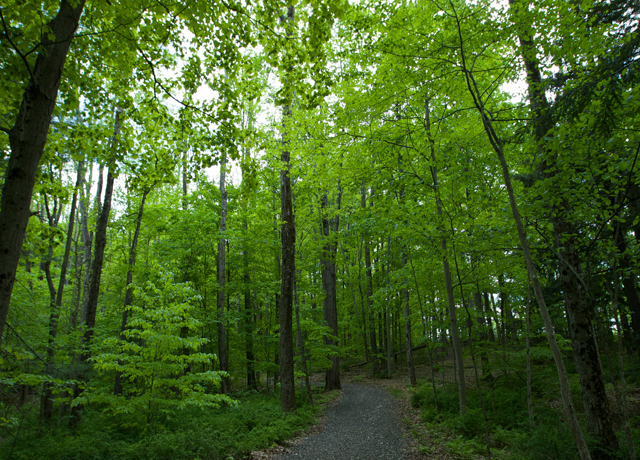Landscape
With 140 acres of expansive lawns, meadows, and woods, the Clark is surrounded by profound natural beauty. The windows of its galleries afford views of woods, fields, farm pastures, and a lily pond. Walking trails traverse the property, including trails up historic Stone Hill, which offers a spectacular view of Williamstown and the Green Mountains of Vermont to the north.
Preserving the landscape’s natural beauty and innate characteristics was a priority of landscape architecture firm Reed Hilderbrand and architect Tadao Ando during the dramatic redesign of the Clark’s grounds in 2014. Another consideration was how people would interact with and care for the landscape over time. The plan underscored the Clark’s commitment to environmental stewardship by significantly enhancing sustainability initiatives across the campus and integrating green design practices, and in 2016, the Clark Center earned LEED Gold Certification.
LAND acknowledgEment
The Clark Art Institute sits on the ancestral homelands of the Mohican people. We acknowledge the tremendous hardship of their forcible removal from these homelands by colonial settlers. A federally-recognized Nation, they now reside in Wisconsin and are known as the Stockbridge-Munsee Community. As we learn, speak, and gather here, we pay honor to their ancestors (past and present) and to future generations by committing to build a more inclusive and equitable space for all.
Landscape Management
The Clark employs a multifaceted effort to manage the landscape and find a balance between aesthetics and sustainability. Within the landscape’s park-like setting, traditional lawns serve as recreation areas and surrounding expanses of long meadow grass lessen fossil fuel consumption; create habitats for ground nesting birds, insect life, and rodents (which, in turn, provide food for birds of prey); and aid soil health and groundwater runoff.
Promoting healthy soil is a priority. Natural materials such as dehydrated feathers and compost feed the meadow and lawns, and injections of beneficial fungi create a habitat that mimics the forest floor and creates healthier soil over time. Synthetic additives may be used for new plantings, helping them become established and giving more sustainable approaches time to begin working—lessening the need for artificial additions in the future and promoting the soil’s long-term health.
Other key elements of landscape management include substantial new plantings, including one thousand new, largely native trees over the past ten years, and the concurrent removal of invasive plants; expansion of and upgrades to the existing network of walking paths and trails; a new entrance drive; and landscaped parking areas that accommodate 340 vehicles.
